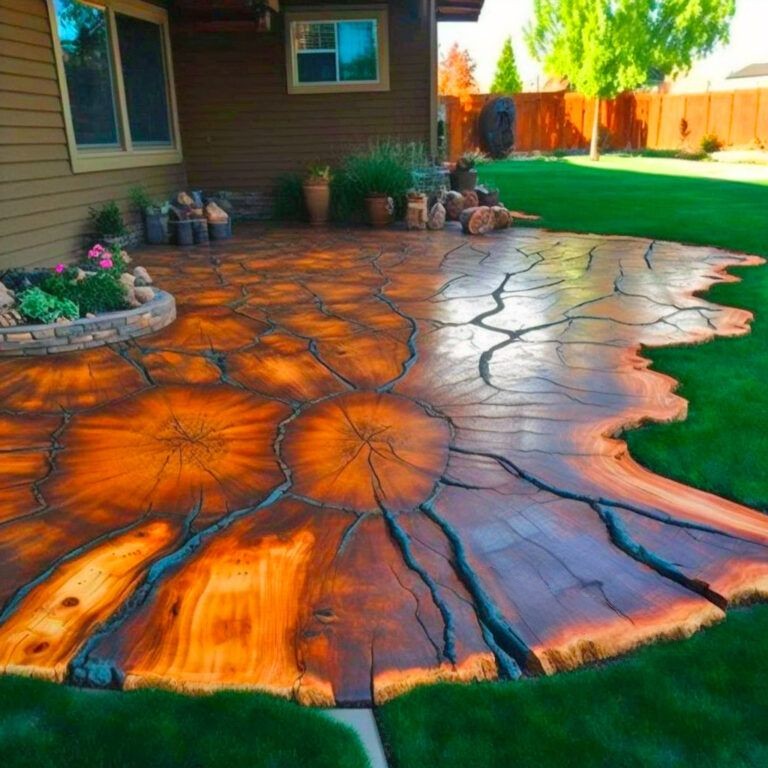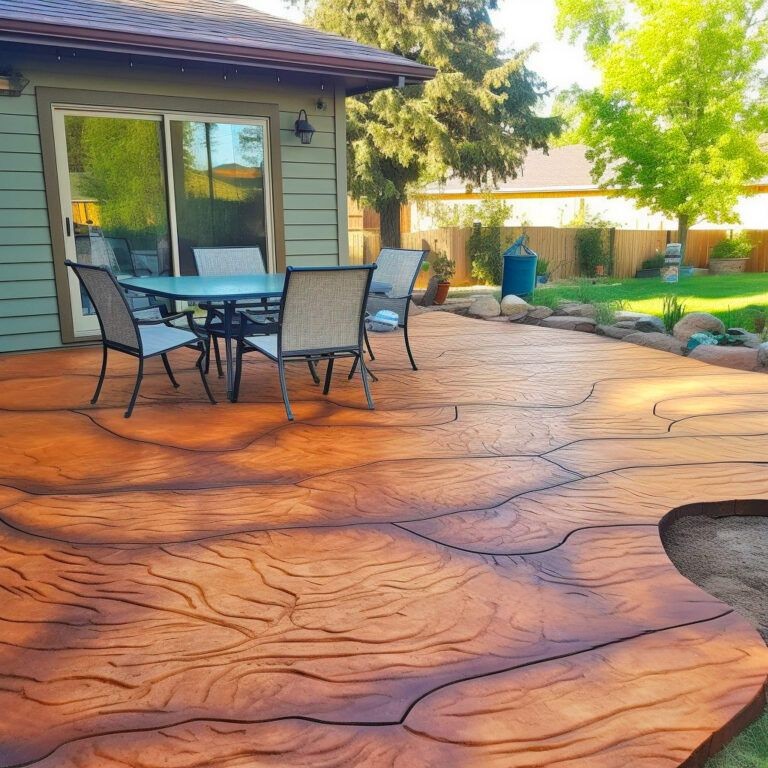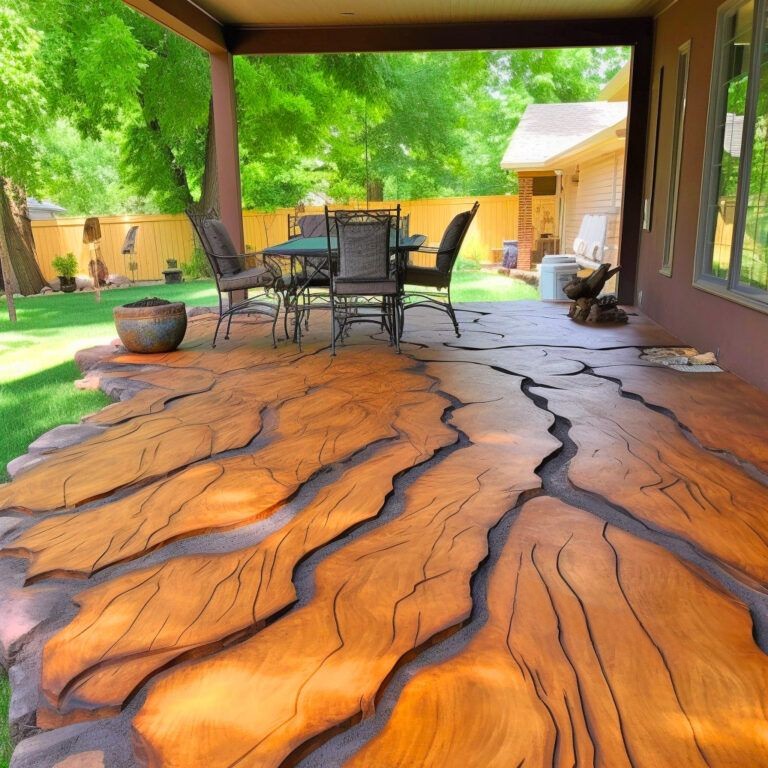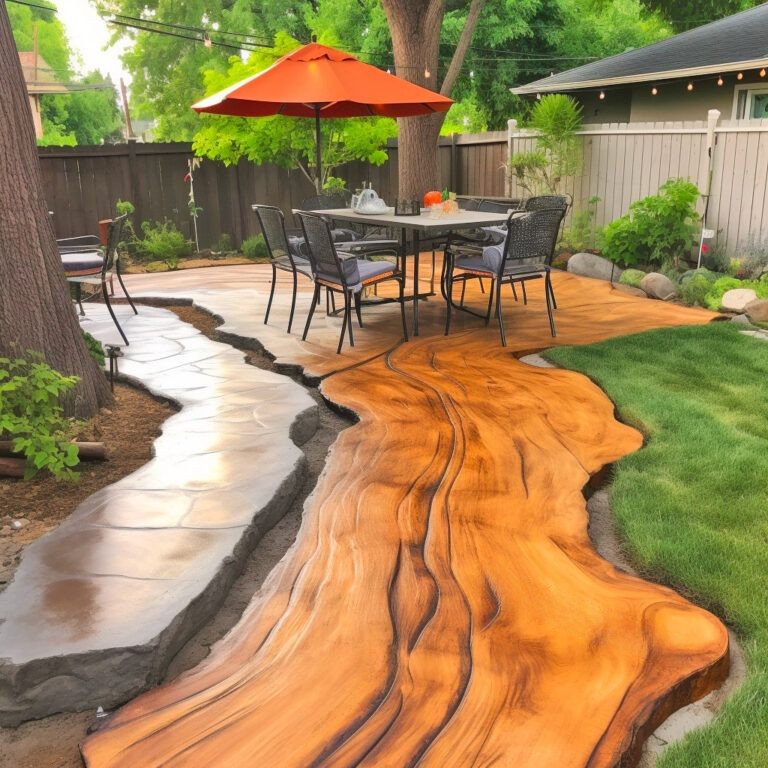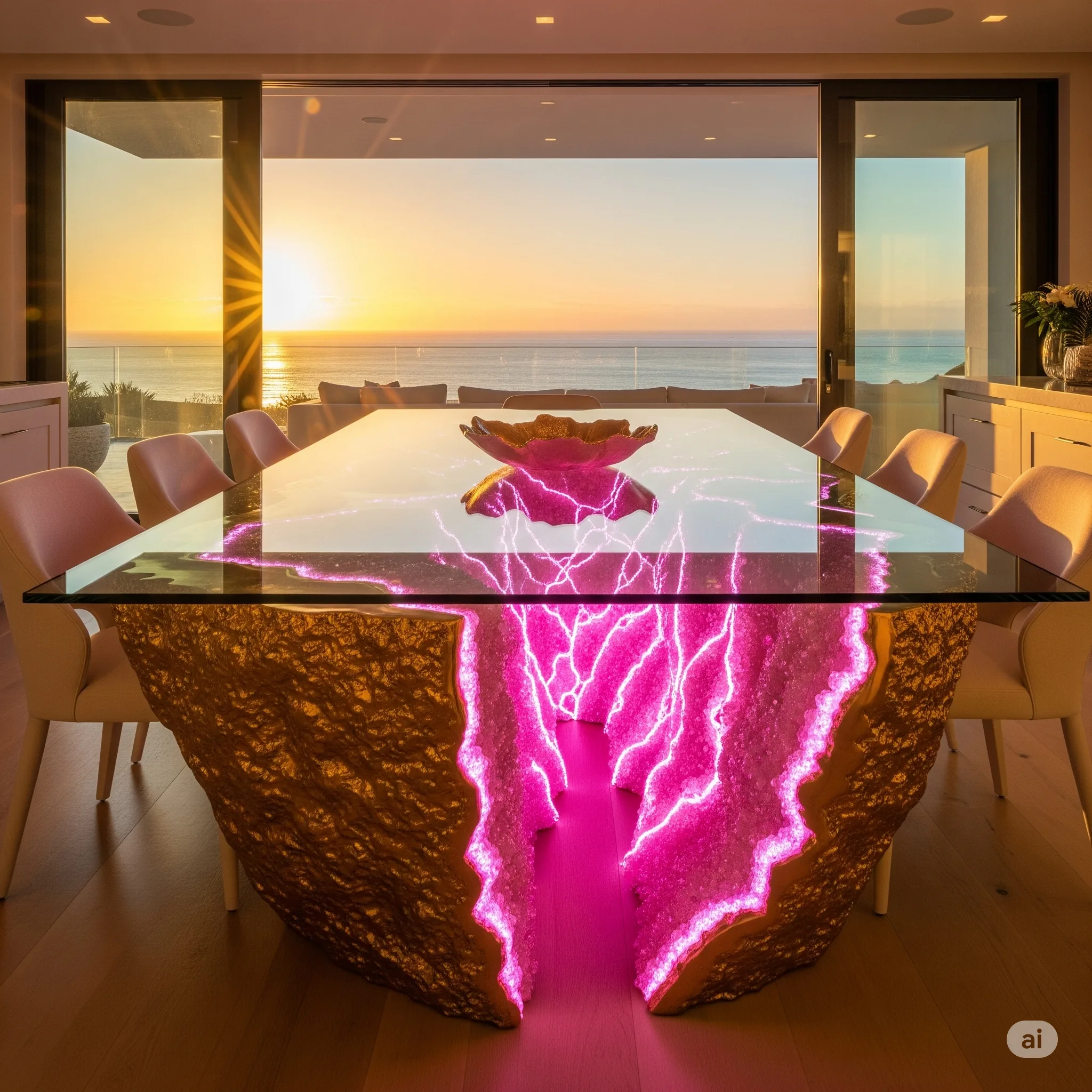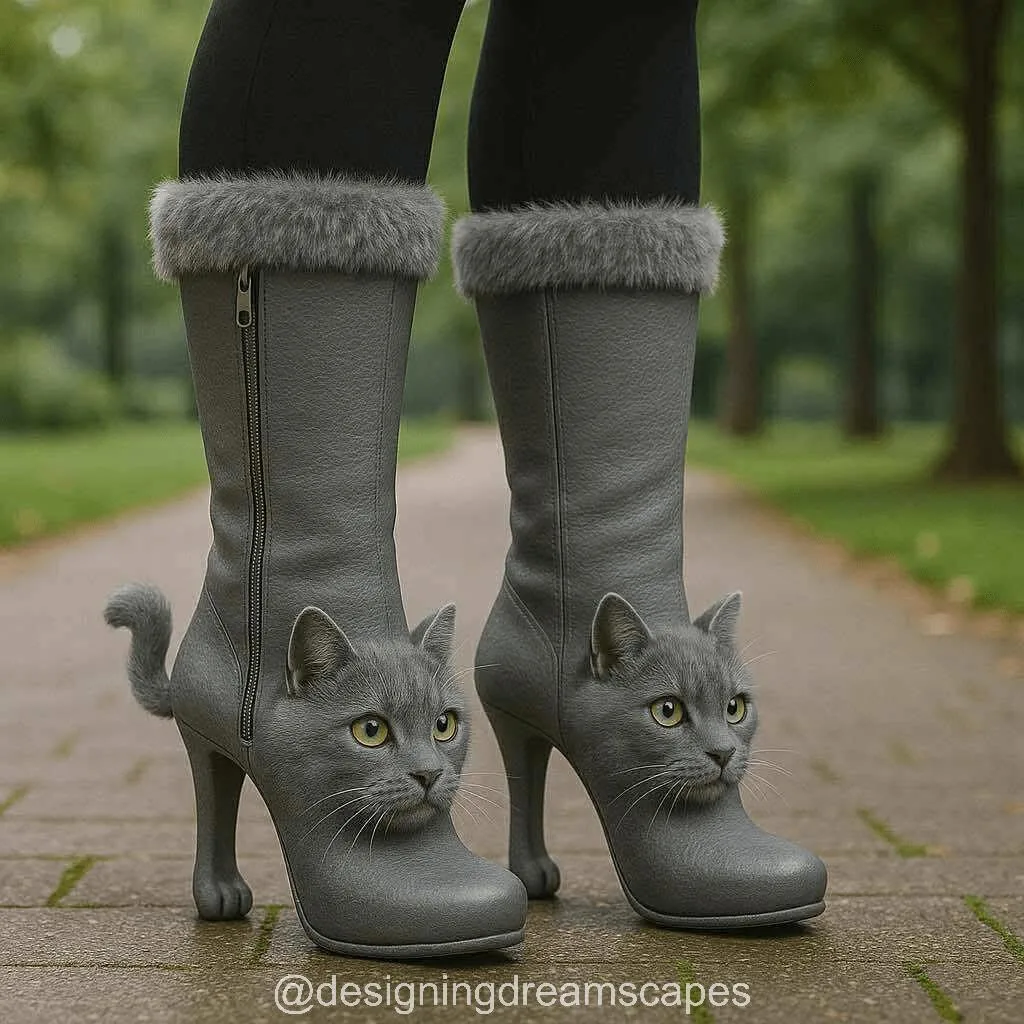Did you know that stamped concrete that mimics the look of wood is gaining popularity among homeowners? In fact, a surprising statistic reveals that more and more people are opting for this innovative technique to achieve the warmth and beauty of wood without the high maintenance it requires.
With advancements in technology, stamped concrete can now closely replicate the texture, grain, and color variations of different wood species. This means you can have the stunning appearance of a wooden deck or patio without worrying about splintering, rotting, or termite damage. Plus, stamped concrete offers exceptional durability and versatility that traditional wood simply can’t match.
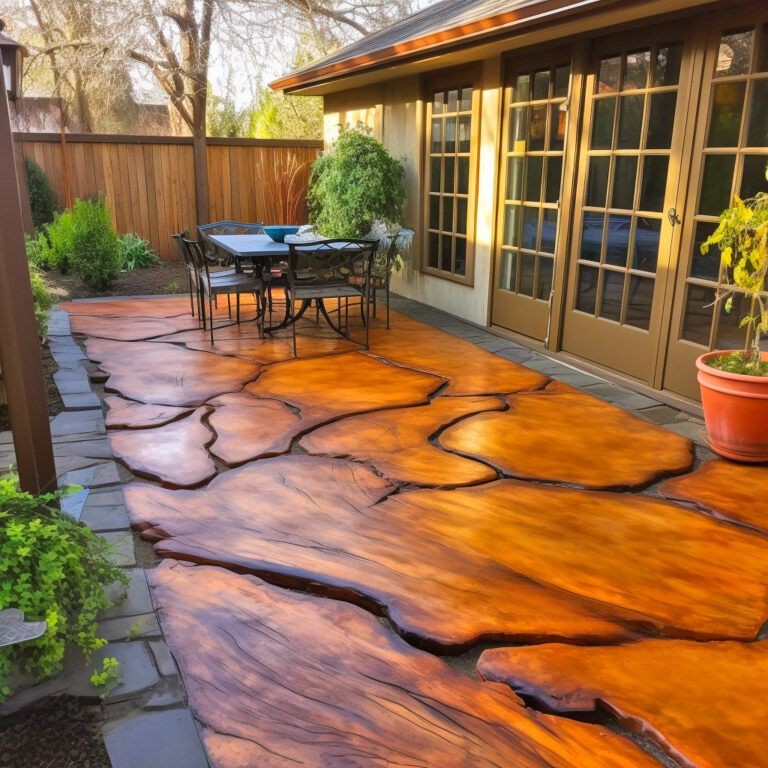
So if you’ve been dreaming of a beautiful outdoor space with the charm of wood but want something more durable and low-maintenance, look no further than Stamped Concrete That Looks Like Wood 🌳🏡. Get ready to transform your backyard into an inviting oasis that will impress your guests and stand the test of time.
Contents
- 1 The Basics of Wood Stamped Concrete
- 2 Achieving a Wood Look with Stamped and Stained Concrete
- 3 Wood-Grain Patterns for Concrete Bridges
- 4 Wooden Plank Designs for Concrete Walkways
- 5 Replicating Reclaimed Timber on Concrete Patios
- 6 Techniques for Wood-like Finishes on Concrete
- 7 The Allure of Concrete Wood Floors
- 8 Wood Plank Finish Options for Concrete Countertops
- 9 Trends in Decorative Concrete for a Faux Wood Appearance
- 10 Conclusion
The Basics of Wood Stamped Concrete
Wood stamped concrete is a unique technique that allows you to achieve the look and feel of wood on your concrete surfaces. By using rubber stamps pressed onto freshly poured concrete, you can create a texture that resembles various wood patterns such as planks, boards, or logs. This innovative method gives you the opportunity to customize your concrete surface and add a touch of natural beauty.
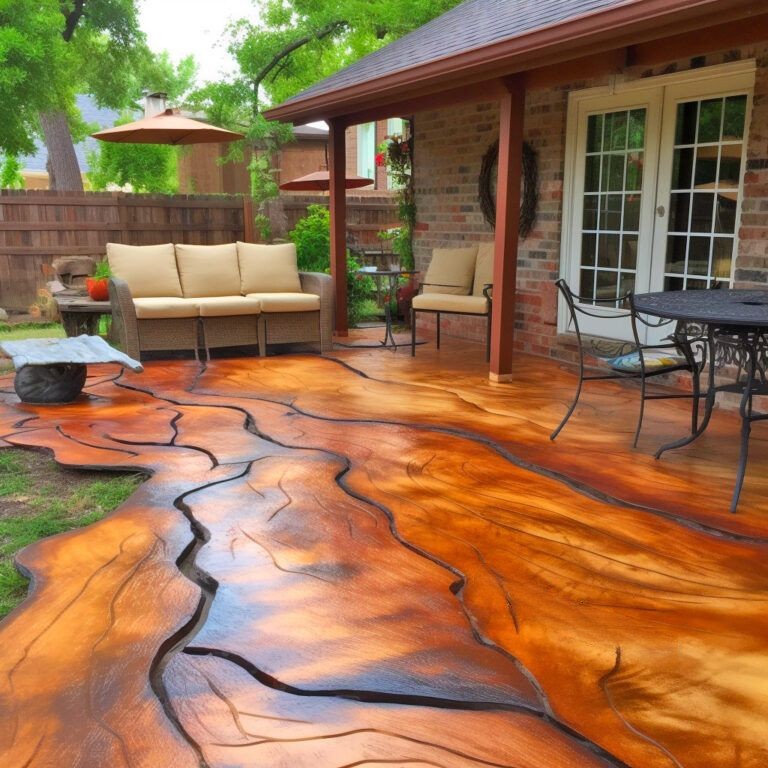
Pressing Rubber Stamps for Texture
The process of creating wood stamped concrete begins with pouring fresh concrete onto the desired area. While the concrete is still wet, rubber stamps are pressed onto its surface to create texture. These stamps are designed in different patterns that mimic the appearance of wood. Whether you prefer the look of wide planks or rustic log textures, there are stamp options available to suit your preferences.
Customizing Appearance with Patterns
One of the advantages of using wood stamped concrete is the ability to customize its appearance. The variety of stamp patterns allows for endless design possibilities. You can choose from different widths and lengths of planks or opt for a more intricate pattern resembling weathered boards or tree bark. This versatility ensures that you can achieve the exact look you desire for your project.
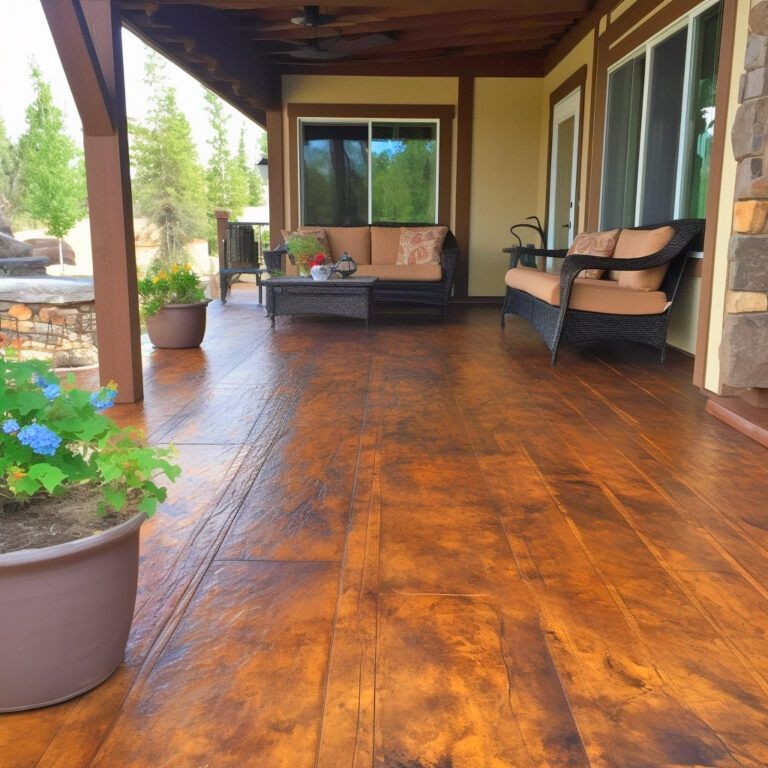
Mimicking Natural Wood Hues and Tones
To further enhance the realistic appearance of wood stamped concrete, coloring agents or stains are applied after stamping. These coloring agents mimic the natural hues and tones found in different types of wood. Whether you want to replicate the warm brown tones of oak or the rich red shades of mahogany, there are staining options available to help achieve your desired look.
Achieving a Wood Look with Stamped and Stained Concrete
Stamping and staining techniques for a realistic wood appearance
Stamping alone creates the texture, while staining adds depth and realism to the wood-like finish. By combining these two techniques, you can achieve a highly realistic wood appearance on your concrete surface.
The first step is to select the right stamp pattern. There are various patterns available that mimic different types of wood grains, such as oak, pine, or cedar. Once you have chosen the desired pattern, the concrete is poured and then stamped using specialized tools to create the texture of wood.
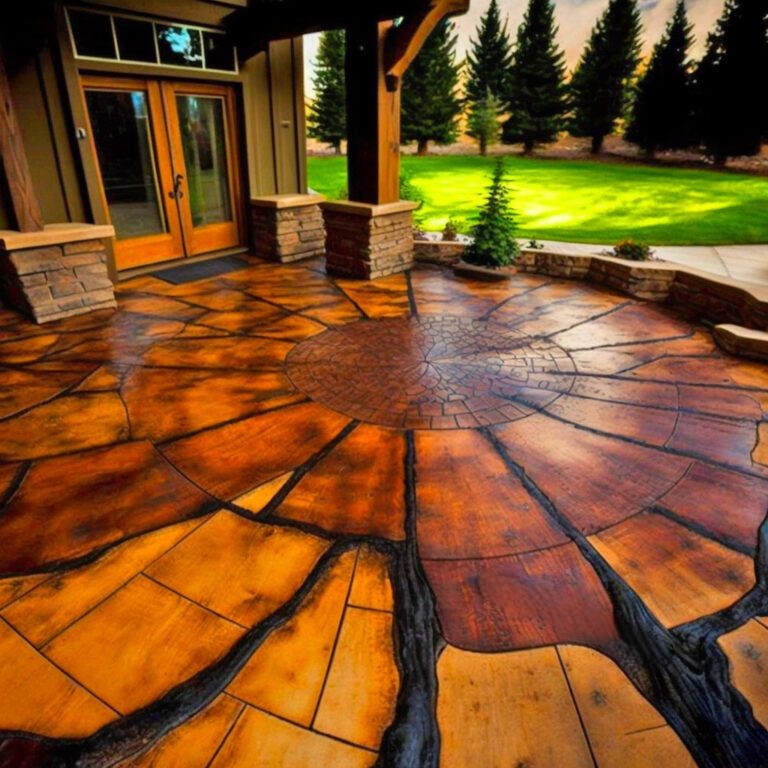
After stamping, staining is applied to enhance the natural look of wood grain. Different staining techniques can be used to achieve this effect. One popular method is layering colors by applying multiple coats of stain in varying shades. This creates depth and dimension, replicating the variation found in real wood.
Translucent stains are another option for creating a realistic wood appearance. These stains allow some of the underlying color of the concrete to show through, mimicking the natural variations in tone that occur in wooden surfaces.
Enhancing the natural look of wood grain
To further enhance the natural look of wood grain on stamped concrete surfaces, additional techniques can be employed.
One technique involves using an antiquing release agent during stamping. This release agent not only prevents stamps from sticking to the wet concrete but also adds subtle color variations and highlights to replicate aged or weathered wood.
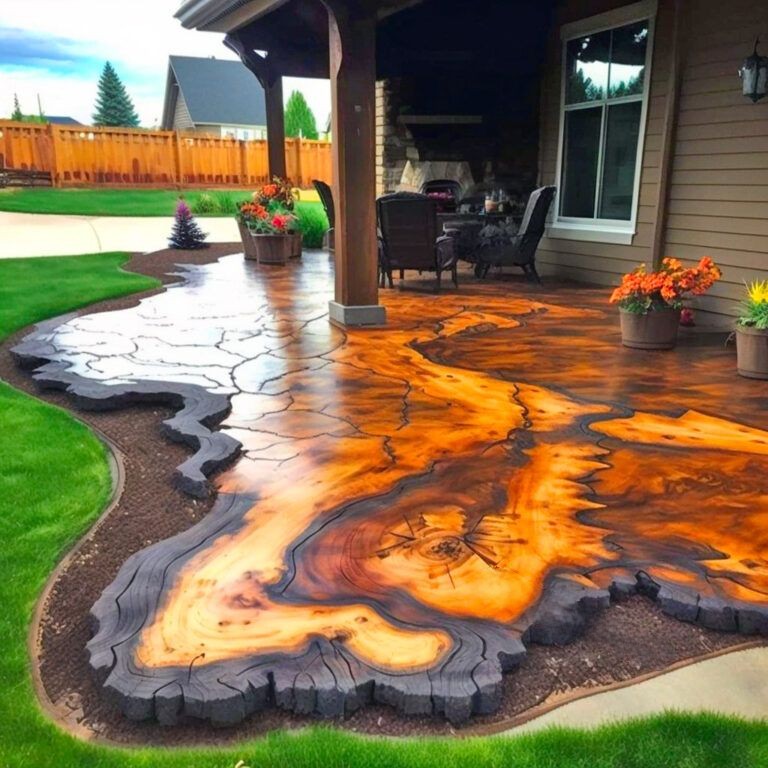
Another method is hand-tooling or hand-staining specific areas after stamping. This allows for more precise detailing and customization, such as adding knots or imperfections commonly found in real wood.
In addition to stain colors and application techniques, other factors contribute to achieving an authentic-looking wood finish on stamped concrete surfaces. The type of sealer used plays a crucial role in enhancing both color vibrancy and longevity. A high-quality sealer will protect the surface from UV damage, stains, and wear, ensuring that the wood-like appearance remains intact for years to come.
The benefits of stamped concrete that looks like wood
Choosing stamped concrete that looks like wood offers several advantages over traditional wooden surfaces. Stamped concrete is more durable and requires less maintenance compared to real wood. It does not rot, warp, or splinter like natural wood does, making it an ideal choice for outdoor spaces such as patios or pool decks.
Furthermore, stamped concrete provides endless design possibilities. With a wide range of stamp patterns and stain colors available, you can customize your concrete surface to resemble any type of wood you desire. This versatility allows homeowners to achieve their desired aesthetic without the limitations and drawbacks associated with real wood.

Wood-Grain Patterns for Concrete Bridges
Concrete bridges can be designed with wood-grain patterns to blend seamlessly into natural surroundings.
Concrete bridges are a crucial part of our transportation infrastructure, providing safe and efficient passage over bodies of water and other obstacles. However, traditional steel or timber structures may not always be the best aesthetic fit for certain environments. That’s where wood-grain patterns on concrete bridges come into play. By incorporating these patterns, engineers and architects can create bridges that seamlessly blend into their natural surroundings.
The use of wood-grain patterns allows concrete bridges to mimic the appearance of real wood, giving them a warm and organic feel. These patterns are achieved through a technique called stamped concrete, where specially designed molds or stamps are pressed onto freshly poured concrete to create texture and imitate the look of wood grain. The result is a bridge that harmonizes with its environment, whether it’s a forested landscape or a rural countryside.
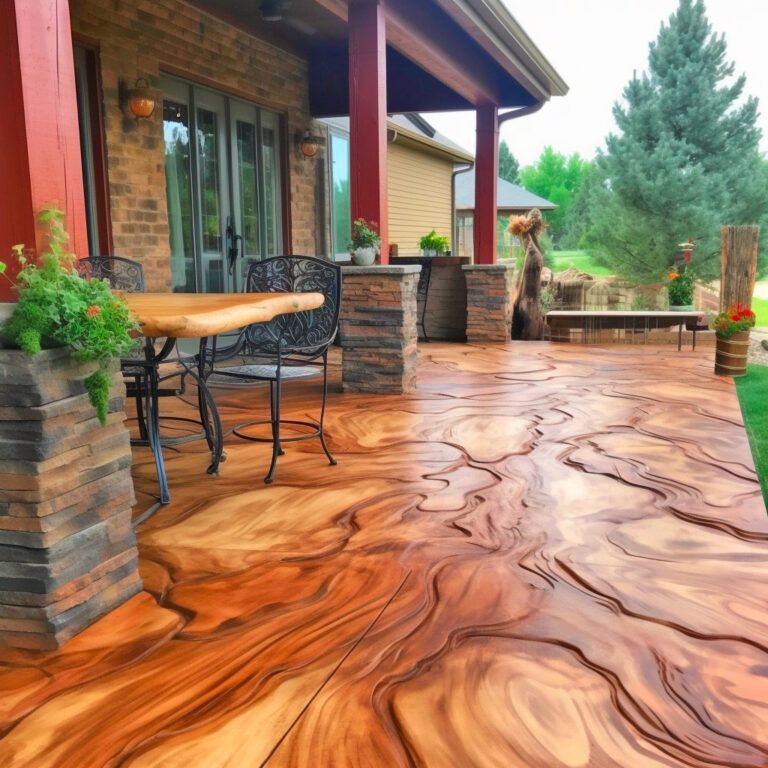
Wood-grain patterns on concrete bridges offer an aesthetically pleasing alternative to traditional steel or timber structures.
One of the main advantages of using wood-grain patterns on concrete bridges is their aesthetic appeal. While steel and timber bridges have their own unique charm, they may not always complement the surrounding natural beauty. By opting for stamped concrete with wood-grain patterns, bridge designers can create structures that evoke the warmth and elegance of wood without sacrificing durability or safety.
Moreover, wood-grain patterns offer versatility in terms of colors and finishes. Different shades can be applied to the stamped concrete surface to achieve various looks such as cedar or oak. This allows designers to customize the bridge’s appearance according to the specific requirements of each project. Whether it’s matching existing wooden structures nearby or creating a distinct visual statement, wood-grain patterns provide flexibility in design choices.
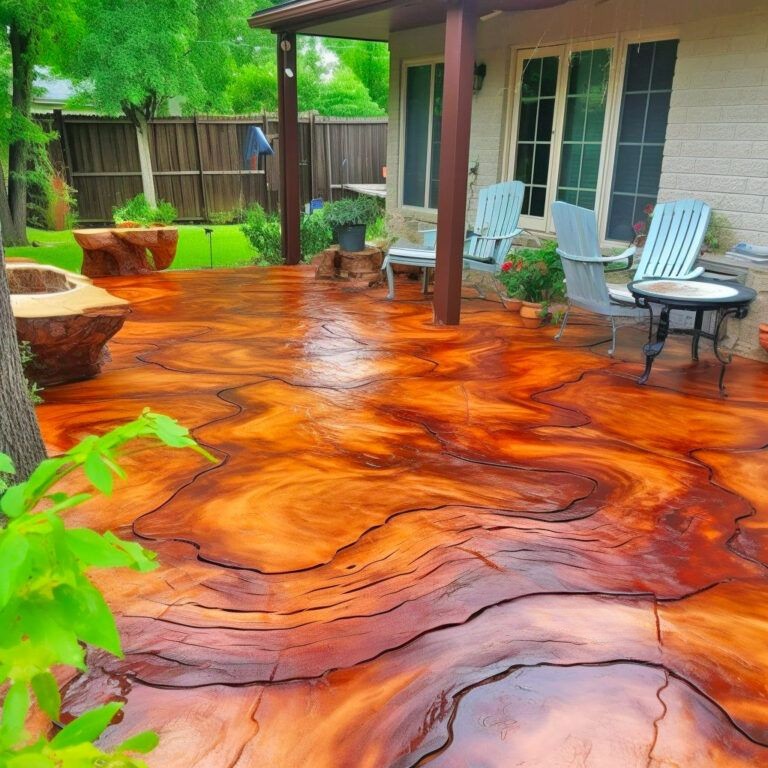
The durability and low maintenance requirements of stamped concrete make it an ideal choice for bridge construction.
In addition to their visual appeal, wood-grain patterns on concrete bridges offer practical benefits. Stamped concrete is known for its durability and longevity, making it an excellent choice for bridge construction. Unlike wood, which can rot or warp over time, stamped concrete is resistant to weathering and requires minimal maintenance.
The low maintenance requirements of stamped concrete bridges translate into cost savings over the long term. Traditional wooden structures often require regular inspections, repairs, and treatments to maintain their integrity. In contrast, stamped concrete bridges are designed to withstand the test of time with minimal intervention. This not only reduces maintenance costs but also minimizes disruptions to traffic flow during routine upkeep.

Wooden Plank Designs for Concrete Walkways
Concrete walkways are not only functional but can also be transformed into stunning wooden plank designs using stamped concrete techniques. By replicating the look of real wood, these designs provide a safe and durable solution that adds charm and character to any outdoor space.
One of the key advantages of using stamped concrete to create wooden plank designs on walkways is its versatility. With stamped concrete, you have the flexibility to customize various aspects such as the width, length, and color variations of the planks. This allows you to achieve the desired aesthetic while still maintaining the benefits of concrete’s durability and low maintenance.
The first advantage of opting for wooden plank designs on your concrete walkway is their visual appeal. These patterns mimic the natural grain and texture of wood, creating an inviting and warm atmosphere in your outdoor space. Whether you prefer a rustic or contemporary look, there are various wood-grain patterns available that can be tailored to suit your style preferences.
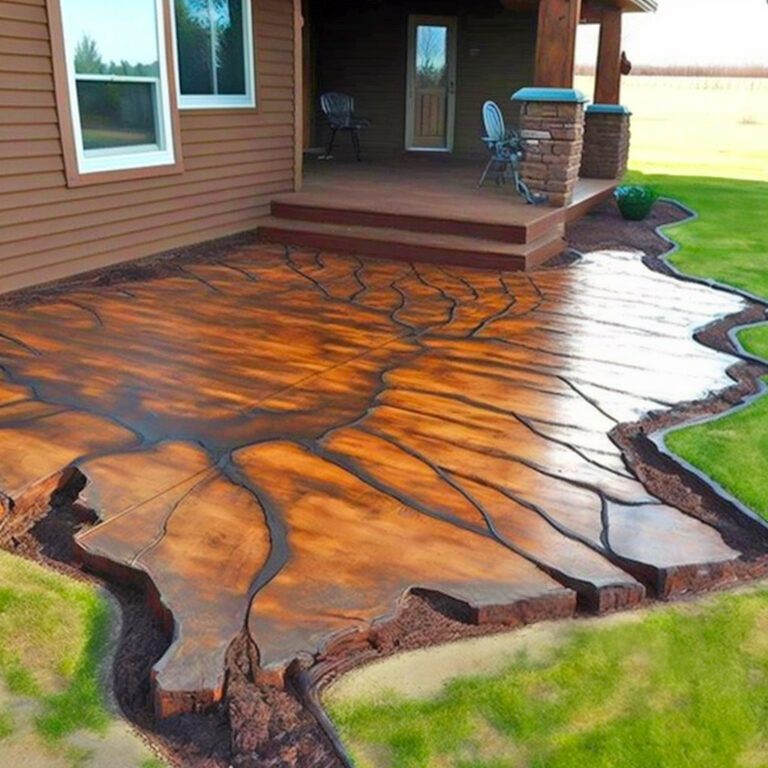
In addition to their visual appeal, wooden plank designs on concrete walkways offer practical benefits as well. Unlike real wood, which requires regular maintenance such as staining or sealing, stamped concrete requires minimal upkeep. It is resistant to fading, cracking, and rotting, making it a long-lasting option for your walkway.
Another advantage of using stamped concrete for wooden plank designs is its slip-resistant surface. The texture created during the stamping process provides traction underfoot, reducing the risk of slips and falls even when wet. This makes it an ideal choice for areas prone to moisture or where safety is a priority.
Furthermore, choosing stamped concrete over real wood for your walkway contributes to sustainability efforts by reducing deforestation. By replicating the appearance of wood without cutting down trees, you can enjoy the beauty of nature while minimizing environmental impact.
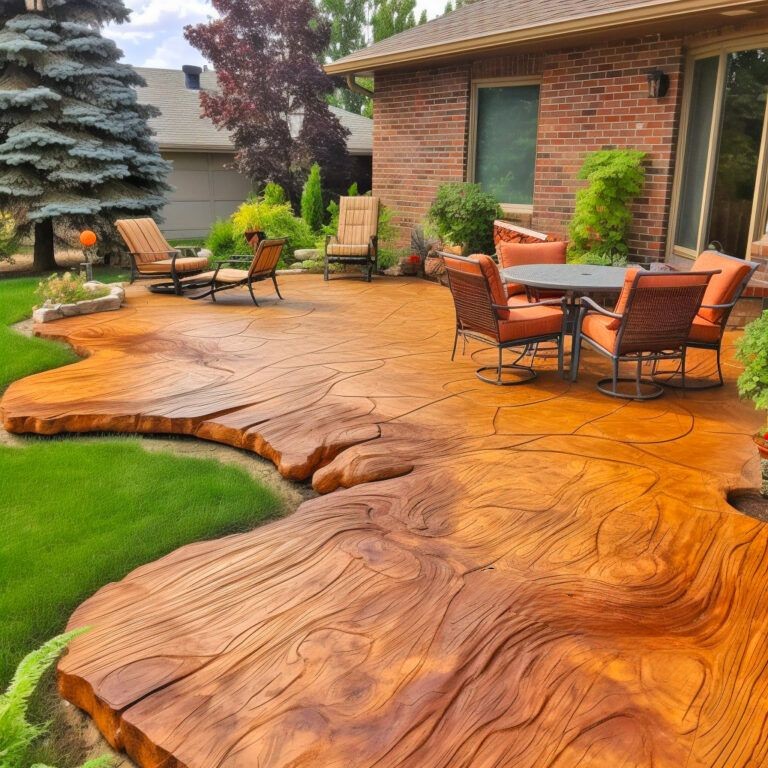
Replicating Reclaimed Timber on Concrete Patios
Concrete patios have long been a popular choice for outdoor spaces due to their durability and versatility. However, if you’re looking to add a touch of warmth and natural beauty to your patio, you may be interested in stamped concrete that looks like wood. This innovative technique allows you to replicate the weathered and aged look of reclaimed timber on your concrete patio, creating a stunning and unique outdoor space.
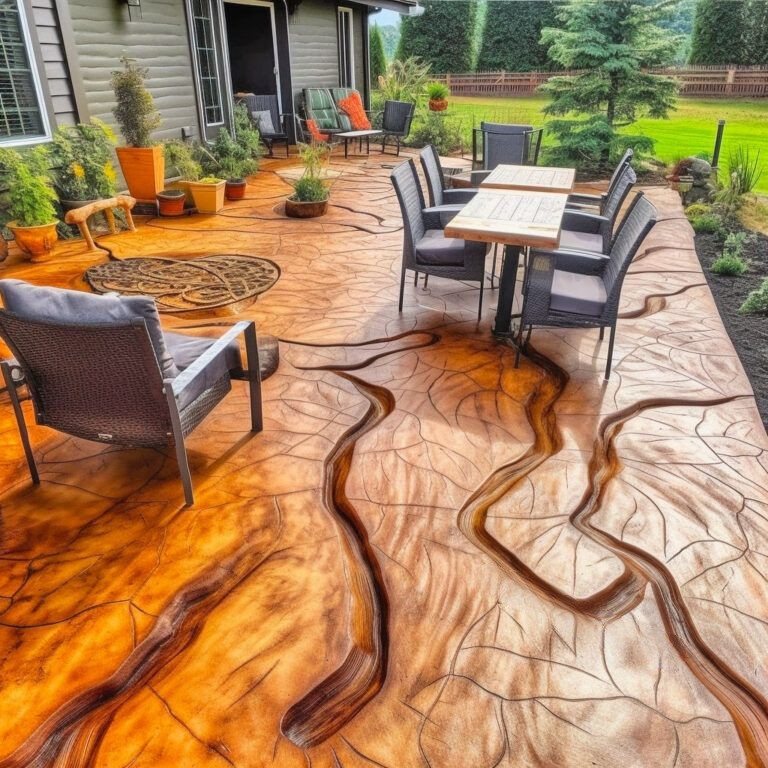
Stamped Concrete: A Realistic Wood Finish
One of the key advantages of stamped concrete is its ability to mimic the appearance of different materials, including wood. By using specialized stamps and staining techniques, skilled craftsmen can create a realistic wood texture on the surface of your concrete patio. These stamps are designed to resemble wooden planks with intricate grain patterns and knots, giving your patio the authentic look and feel of weathered timber.
The Beauty of Wood without the Drawbacks
Choosing stamped concrete that looks like wood for your patio offers several benefits over traditional wooden decks or patios. First and foremost, it eliminates concerns about rotting or splintering that are commonly associated with natural wood. With a stamped concrete patio, you can enjoy the aesthetic appeal of wood without worrying about regular maintenance or potential hazards.
Stamped concrete provides excellent durability and longevity compared to traditional wooden surfaces. It is resistant to fading from sunlight exposure, as well as damage from moisture or pests. This means that your patio will maintain its beautiful wood-like appearance for years to come with minimal upkeep required.
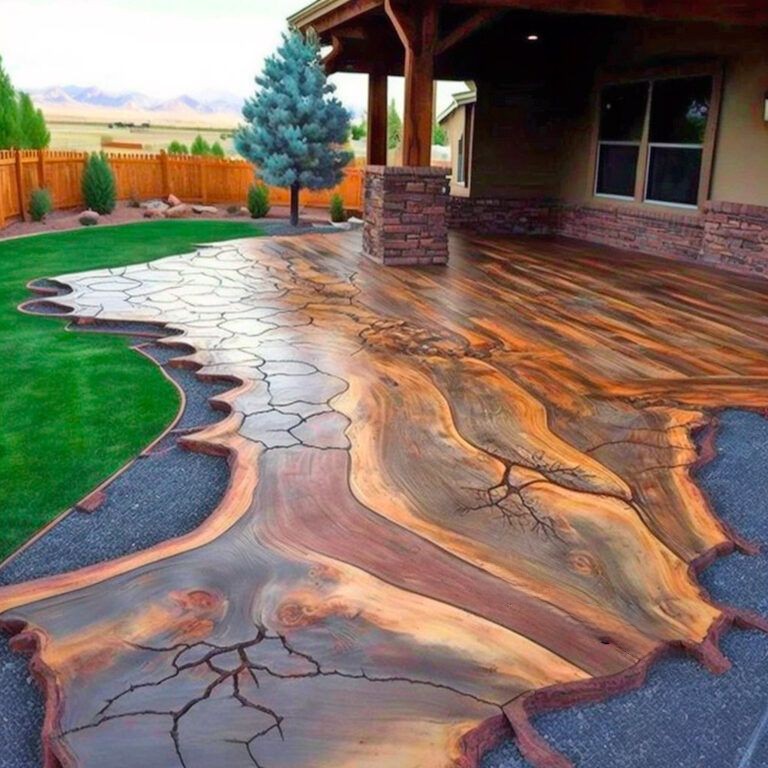
Versatility in Design Options
Stamped concrete offers endless design possibilities. You can choose from various stamp patterns that resemble different types of wood, such as oak, pine, or cedar. Staining techniques can be used to create different colors and shades that mimic the natural aging process of timber.
Whether you prefer a rustic, weathered look or a more refined and polished appearance, stamped concrete can be customized to match your desired aesthetic. The versatility of this technique allows you to create a patio that complements your outdoor space and seamlessly blends with the surrounding landscape.
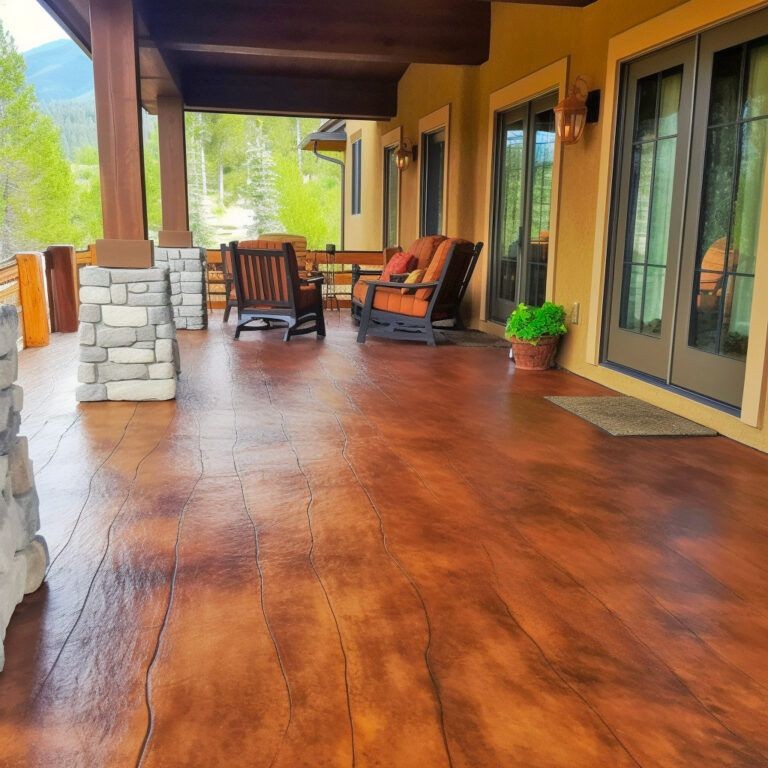
Techniques for Wood-like Finishes on Concrete
Various Techniques for a Wood-like Finish
Achieving a wood-like finish on concrete may seem like a daunting task, but with the right techniques, it can be accomplished beautifully. There are several methods to consider, each offering its own unique way to mimic the appearance of different wood species.
One popular technique is hand-troweling. This method involves using a trowel to apply and manipulate the concrete, creating textures that resemble the grain of various types of wood. By carefully manipulating the concrete with subtle movements, skilled artisans can achieve realistic wood patterns that add depth and character to any surface.
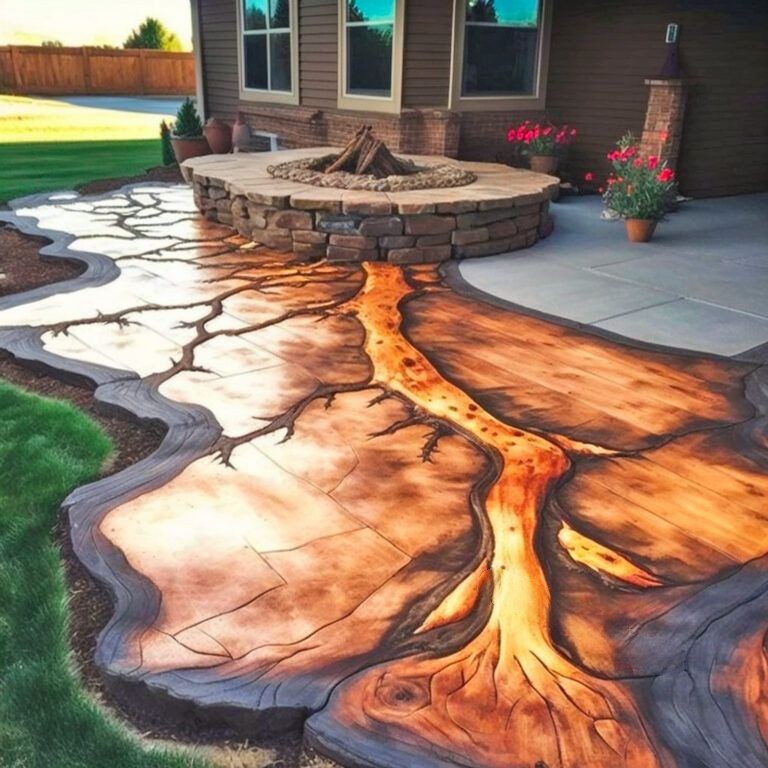
Another technique to consider is scoring. This involves using specialized tools to create shallow grooves or lines in the concrete surface. These grooves can be strategically placed to mimic the natural patterns found in different types of wood. By varying the depth and spacing of the lines, an authentic wood-like appearance can be achieved.
Creating Unique Textures and Patterns
The beauty of stamped concrete that looks like wood lies in its ability to replicate not only the color but also the texture and pattern of different wood species. With careful application and attention to detail, skilled craftsmen can create surfaces that closely resemble oak, pine, cedar, or any other desired type of wood.
By combining multiple techniques such as hand-troweling and scoring, even more intricate patterns can be achieved. For example, a craftsman might use hand-troweling to create a base texture resembling oak grain, then use scoring techniques to add knots or other distinctive features found in oakwood. This combination allows for greater customization and results in a more authentic and visually appealing finished product.
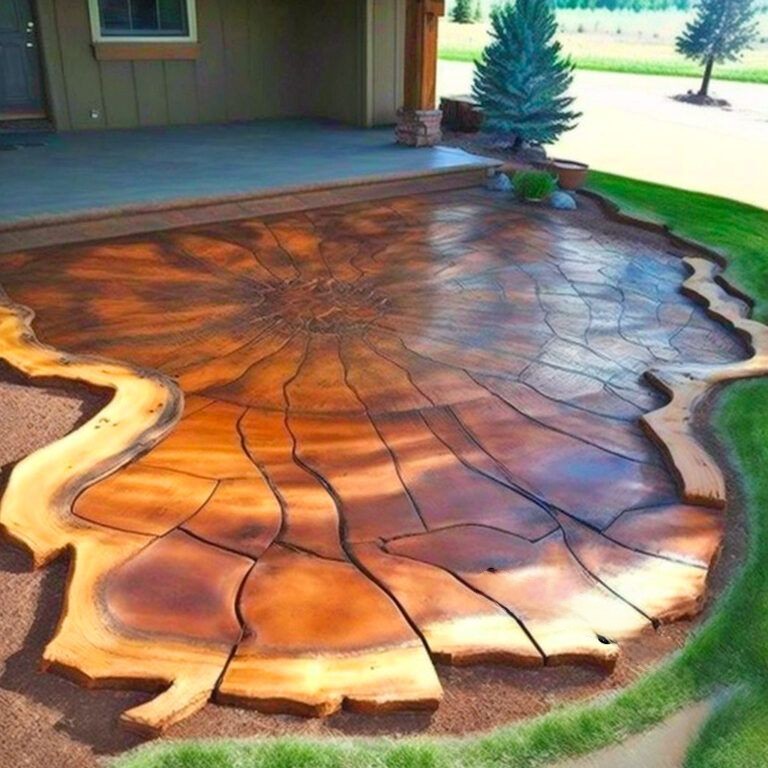
Enhancing Authenticity and Visual Appeal
Authenticity is key. The goal is not simply to replicate the appearance of wood but also capture its essence – from its natural imperfections to its unique color variations. By employing various techniques, craftsmen can enhance the authenticity of the wood-like finish and create a visually stunning result.
One way to enhance authenticity is through the use of color. Concrete stains or dyes can be applied to mimic the natural hues found in different wood species. By carefully selecting and blending colors, craftsmen can achieve a realistic wood-like appearance that is virtually indistinguishable from the real thing.
Adding texture and depth through techniques like hand-troweling and scoring further enhances the visual appeal of stamped concrete that looks like wood. These techniques create a tactile experience that not only looks like wood but also feels like it.
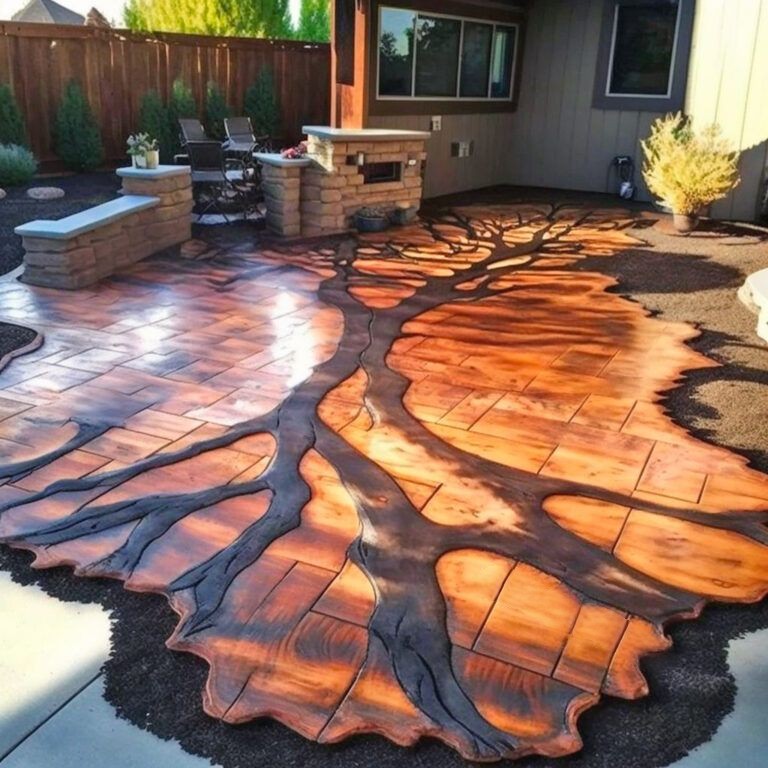
Revolutionize your outdoor space with the beauty of nature using our Stamped Concrete That Looks Like Wood collection! 🌳🏡 Elevate your patio, driveway, or garden with these uniquely crafted stamped concrete designs that mimic the warmth and charm of natural wood. Each step is a walk through a forest of elegance, combining the durability of concrete with the aesthetic appeal of wood. Don’t miss the chance to transform your outdoor areas – click the icon below and explore our Stamped Concrete That Looks Like Wood for a harmonious blend of durability and natural aesthetics!
The Allure of Concrete Wood Floors
Durable and Low-Maintenance Flooring Option
Concrete wood floors are gaining popularity as a durable and low-maintenance alternative to traditional hardwood floors. Unlike real wood, which can be susceptible to scratches, stains, and moisture damage, concrete wood floors offer exceptional durability. They are highly resistant to everyday wear and tear, making them an excellent choice for high-traffic areas in both residential and commercial settings.
Endless Design Possibilities
One of the most appealing aspects of concrete wood floors is their versatility in design. With stamped concrete techniques, contractors can create stunning wood-like finishes that mimic the appearance of different wood species and finishes. Whether you prefer the rustic charm of weathered oak or the sleek elegance of mahogany, there is a stamped concrete option to suit your style.
Contractors can also incorporate live edge designs into the concrete wood floors, adding an organic touch that enhances their natural appeal. This technique involves leaving the edges of the floor uneven and irregular, resembling the natural edges found in real wood slabs. The result is a unique flooring design that adds character and visual interest to any space.

Resistant to Scratches, Stains, and Moisture
Concrete wood floors offer practical benefits beyond their aesthetic appeal. Thanks to their durable nature, they are highly resistant to scratches from furniture or pet claws. This makes them an ideal choice for households with active children or pets.
In addition to scratch resistance, concrete wood floors are also stain-resistant. Spills can easily be wiped away without leaving behind any permanent marks or discoloration. This makes maintenance a breeze compared to traditional hardwood floors that require regular refinishing treatments.
Furthermore, moisture poses no threat to concrete wood floors. Unlike real wood which can warp or rot when exposed to excessive humidity or water spills, stamped concrete maintains its integrity even in wet environments such as bathrooms or kitchens.
Read more: Transform Your Yard into an Artistic Gallery with These Creative Garden Walkways
Wood Plank Finish Options for Concrete Countertops
Stamped concrete offers various wood plank finish options for concrete countertops, allowing you to customize the look to suit your style.
If you’re looking to add a touch of warmth and natural beauty to your kitchen or bathroom, wood plank finishes on concrete countertops can be the perfect solution. With stamped concrete, you have a wide range of options to choose from. Whether you prefer the rustic charm of reclaimed barnwood or the sleek elegance of mahogany, there is a stamped concrete option that will suit your style.
One of the great advantages of using stamped concrete for wood plank finishes is its versatility. You can achieve different textures and patterns that mimic various types of wood grains. From bold and pronounced grain patterns to subtle and smooth finishes, there are endless possibilities to create the exact look you desire. This allows you to match your countertops with existing wood elements in your space or create a unique focal point that stands out.
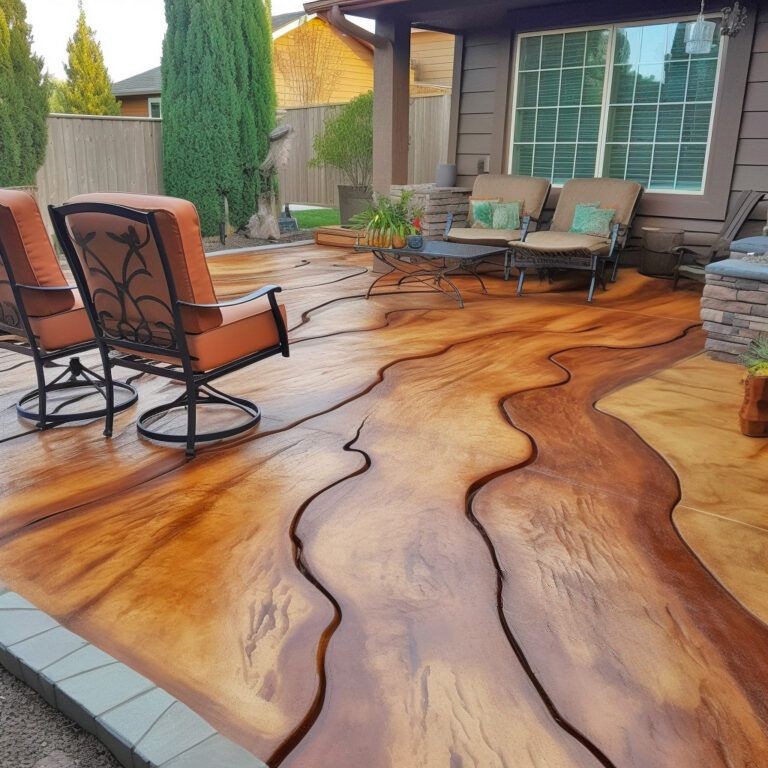
Different sealing techniques can enhance the durability and longevity of wood plank finishes on concrete countertops.
While wood may not be an ideal material for countertops due to its susceptibility to water damage and scratches, stamped concrete provides a durable alternative that can withstand daily use. To ensure the longevity and durability of your wood plank finish on concrete countertops, it’s important to apply proper sealing techniques.
Sealing not only protects the surface from stains but also enhances its resistance against moisture and UV rays. A high-quality sealant creates a barrier that prevents water penetration and minimizes wear and tear over time. By choosing the right sealant for your specific needs, you can enjoy beautiful wood-like countertops without worrying about maintenance or damage.
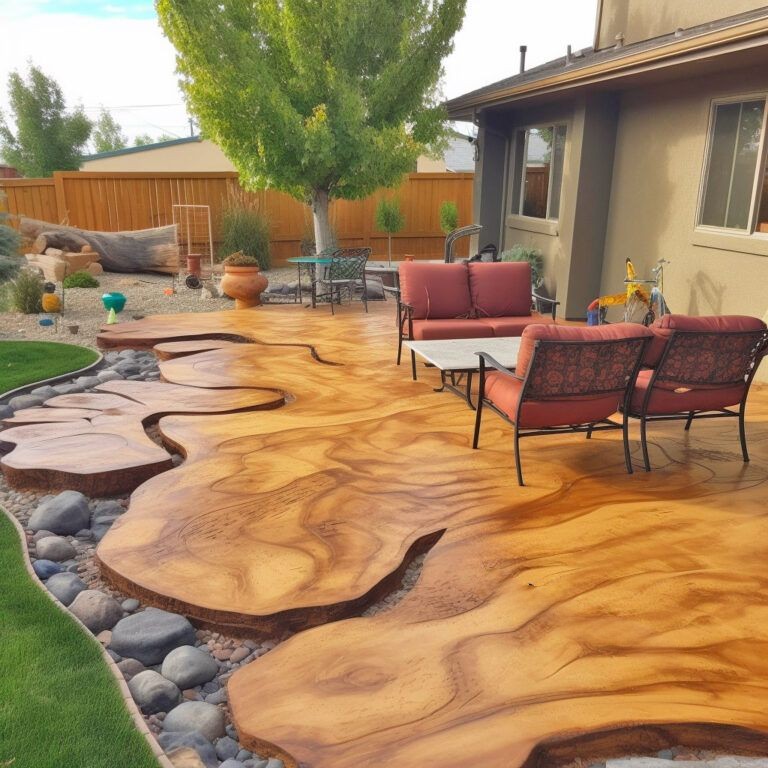
Wood plank finishes on concrete countertops provide a unique and eye-catching focal point in kitchens or bathrooms.
Concrete countertops with wood plank finishes offer more than just practicality; they also serve as stunning design elements in kitchens and bathrooms. The natural warmth and texture of wood bring a sense of coziness and character to any space, making it an ideal choice for those looking to create a welcoming atmosphere.
Whether you opt for a rustic farmhouse style or a modern industrial look, wood plank finishes on concrete countertops can be customized to match your desired aesthetic. The versatility of stamped concrete allows you to experiment with different stain colors, patterns, and textures to achieve the perfect balance between functionality and visual appeal.
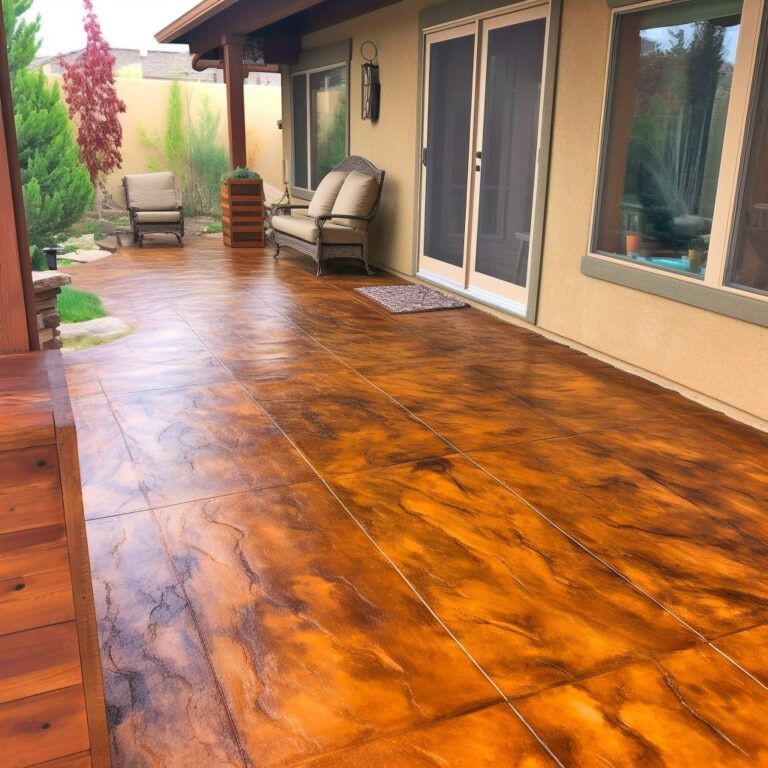
Trends in Decorative Concrete for a Faux Wood Appearance
Acid Etching and Embossing Techniques
Decorative concrete has come a long way in recent years, and one of the latest trends is creating a faux wood appearance using innovative techniques like acid etching or embossing. These methods allow concrete to mimic the natural texture and grain patterns found in wood, giving it an authentic and rustic look.
Acid etching involves applying an acid solution to the surface of the concrete, which reacts with the minerals in the material. This chemical reaction creates unique patterns that resemble wood grain. By carefully controlling the application process, contractors can achieve different levels of depth and variation, making each piece truly one-of-a-kind.
Embossing is another technique that has gained popularity in creating stamped concrete that looks like wood. It involves pressing molds or stamps into wet concrete to create imprints that resemble wooden planks. The result is a textured surface that closely resembles real wood, complete with knots and grains.
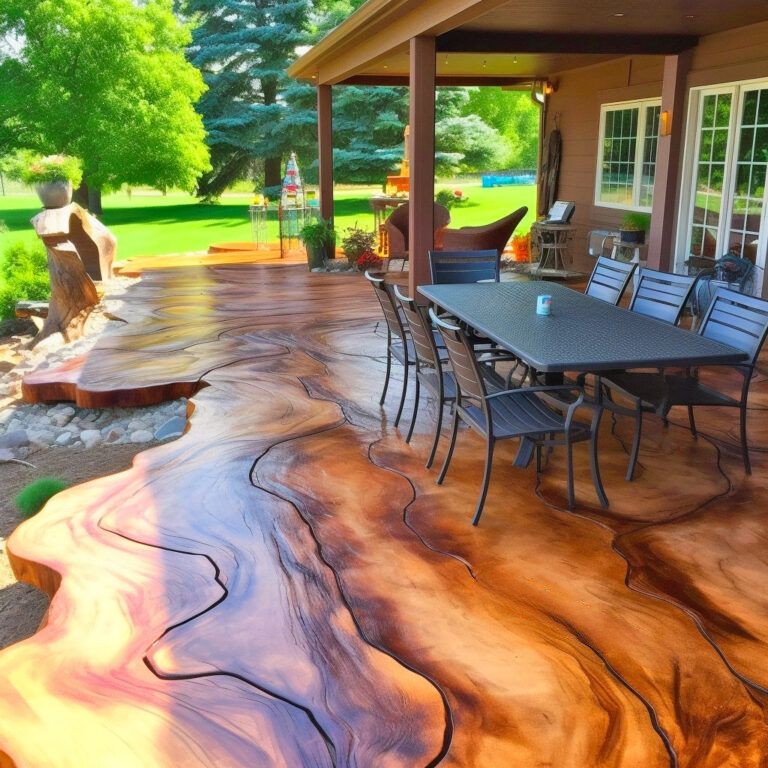
Eco-Friendly Materials and Sustainable Practices
As environmental consciousness continues to grow, so does the demand for eco-friendly materials and sustainable practices in decorative concrete projects. Many homeowners are opting for stamped concrete that looks like wood because it offers an environmentally friendly alternative to traditional hardwood flooring or decking.
Concrete itself is considered a sustainable material as it can be made from abundant resources such as limestone, clay, and water. Some manufacturers offer eco-friendly additives that reduce carbon emissions during production.
In terms of sustainable practices, contractors are increasingly using recycled materials such as crushed glass or fly ash as aggregates in their concrete mixtures. These materials not only help reduce waste but also add unique visual elements to the finished product.
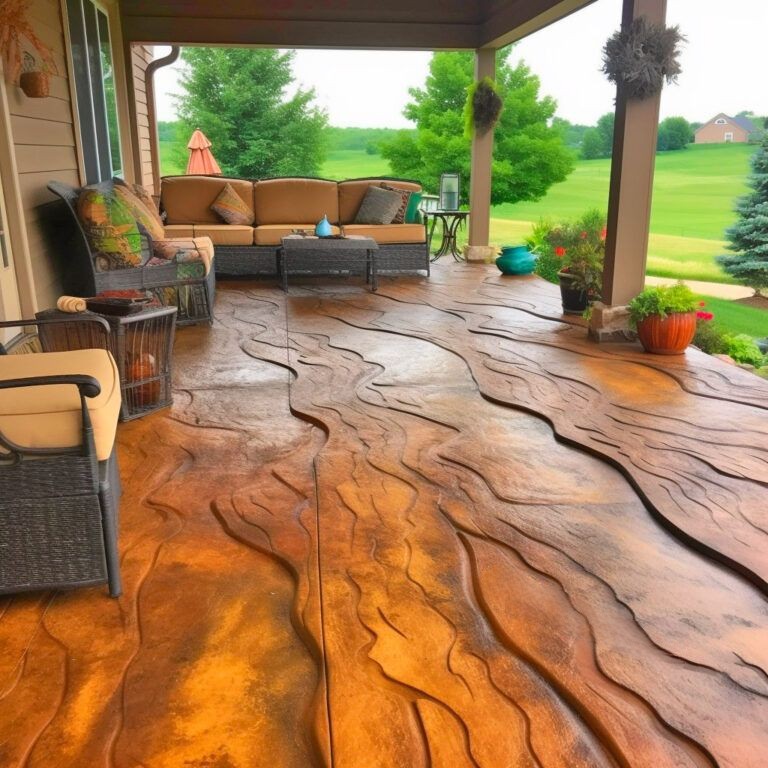
Customization Options
Gone are the days when decorative concrete was limited to simple textures or colors. Nowadays, customization options have expanded significantly, allowing homeowners to incorporate logos or intricate designs into their stamped concrete projects.
For businesses, this opens up opportunities to showcase their brand identity by incorporating their logo into concrete floors or walkways. It’s a unique way to make a lasting impression on customers while maintaining a cohesive aesthetic.
Homeowners, on the other hand, can get creative with their stamped concrete designs. Whether it’s replicating the look of aged barnwood or adding decorative borders and medallions, customization options are virtually limitless. This level of personalization allows individuals to truly make their stamped concrete project reflect their unique style and taste.
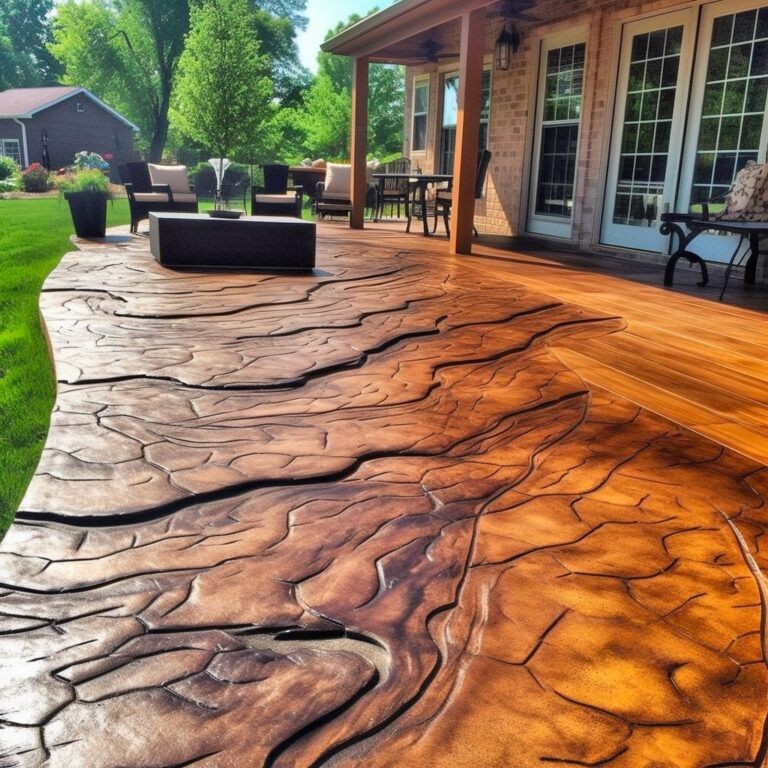
Conclusion
Congratulations! You’ve now explored the fascinating world of stamped concrete that looks like wood. From learning about the basics of wood stamped concrete to discovering various techniques for achieving a wood-like finish, you’ve gained valuable insights into this innovative design trend. Whether you’re considering a wooden plank design for your walkways or replicating reclaimed timber on your patio, the possibilities are endless.
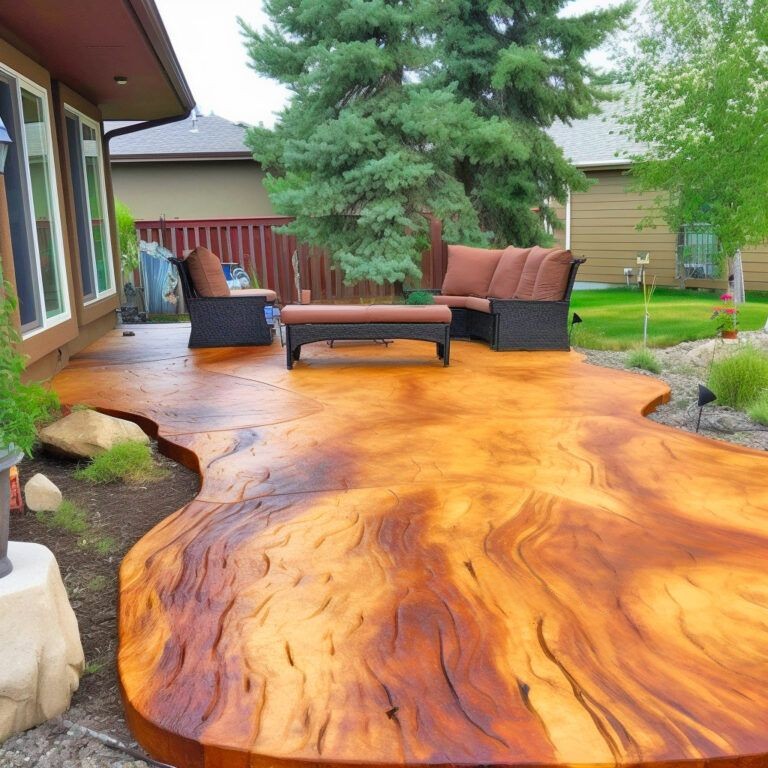
Now that you have a solid understanding of the techniques and options available, it’s time to unleash your creativity and bring your vision to life. Don’t be afraid to experiment with different patterns and finishes to achieve the exact look you desire. Remember, the beauty of stamped concrete that looks like wood lies in its versatility and durability. So go ahead, transform your space and enjoy the timeless charm of wood without the maintenance.
